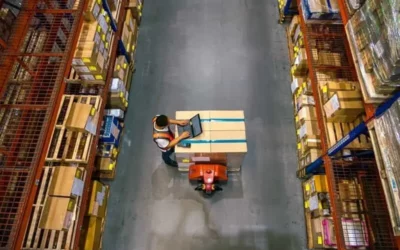How to Optimize Drop Size to Reduce Cost and Increase Efficiency
It is an indisputable fact that the end goal of every business is to make sales. The drive for making sales triggers several pre-sale actions which businesses put in place, therefore forming an acceptable global system of trade and marketing. This includes production, distribution, and delivery to target customers.
A look at the evolving global market system, including the modern trade in UAE, indicates a line between production and customer delivery. The line consists of retail distribution, which has been subject to evolving strategies over time to make life easy for businesses and, at the same time, optimize customer satisfaction.
One element that comes to play in retail distribution in this modern market is the concept of drop size. It is a proven situation with a great nod from supply chain experts that drop size has its way of reducing cost and increasing efficiency for business within the walls of retail distribution.
Hence this piece will reveal the meaning of drop size and its importance and guide businesses through the optimization journey for maximum results with the help of 3PL Distribution Partner.
Table of Contents
What is Drop Size in Retail Distribution
The first worthy note is that drop size is a distribution/sales key performance indicator(KPI). Therefore, the drop size suggests a whole lot about the customer behavior, which will significantly influence production, distribution, fulfillment, and other stages of the supply chain.
Drop size is the volume or unit of product delivered to a specific customer in a specified transport region.
It is the number of stock-keeping units sold to a dealer or customer in a recorded time. A simple mathematical relationship can represent the drop size;
Drop size = Sales Value/Number of Sales
Why is Drop Size Important for A Retail Distribution and Trucks Which is Half Empty?
This section cut across two vital scopes where drop size contributes immensely-retail distribution and underutilized truckload. Before a deeper dive into each concept, it’s best to establish that employing drop size is to optimize cost and efficiency, a win-win situation for both businesses and customers.
Drop Size in Retail Distribution
In simple terms, retail distribution involves getting products from the producer to the customers. This will involve different stages and channels; however, this distribution chain has been evolving to suit the need of the evolving market, especially modern trade in UAE.
Retail distribution generally took the model
| Manufacturer | Master distributor | Regional distr. | Stores | Consumers |
However, evolution has resulted in simpler models such as
| Manufacturer | Regional distr. | Stores | Consumers |
| Manufacturer | Stores | Consumers |
| Manufacturer | DTC(Direct to Customers) |
A good analysis of any of the above-mentioned models suggests one thing- which is the distribution journey. Irrespective of the models, the customers are in outlined locations which will influence the mapping of the route delivery system.
Businesses have to build an effective journey plan. This will involve mapping the different delivery routes for different categories of products. This is where Drop Size comes to play.
Drop Size is a distribution KPI that helps businesses identify and maximize more profitable routes. For example, consider a journey plan where distributions are made to several locations. Routes, where the drop size is low, suggest that the number of customers is high, and routes, where the drop size is high, suggest a low number of customers.
This KPI and concept will help improve the retail distribution journey to optimize cost and efficiency. The focus will be placed on profitable routes, and in the same vein, actions can be taken to revive the less profitable routes.
Hence, drop size give a clear picture of the route profitability and guides the movement of products to different regions and locations.
Drop Size and Half Empty Trucks
Drop size is also vital for an underutilized truckload. Half-empty trucks should only be en route to profitable zones. An underutilized truckload is characteristic of frequent travel times to meet up with the delivery of fast-moving consumer goods(FMCG). Hence drop size indicates the routes with effective customers and a high sales ratio.
Drop size tells the business that more frequent delivery and cases of underutilized truckload should be aimed at routes with higher customer responsiveness and sales.
Why Should Brands Outsource Retail Distribution and Improve Efficiency
It’s quite impossible to rack in great sales without an effective distribution plan and channel. Retail distribution helps get products to customers, and it is a large part of the business in itself. Businesses now have challenges in managing production, distribution, sales pipeline, and overall management of the brand. This brings the idea of outsourcing to a third-party logistics brand.
Businesses can outsource retail distribution to this partner, but many still feel skeptical about the idea. However, it is a great idea that helps businesses improve efficiency and meet up with the ever-evolving market. Here are some good reasons to give outsourcing a thought.
Ever-Changing Market/Trade
Just as the systems of the world are changing, so also is the entire global market. The approach to retail distribution is constantly changing to suit customers changing needs. And businesses may not have the resources and time to study, analyze, and integrate the business into these newer models.
However, outsourcing retail distribution to a 3PL keeps brands in sync with what is working in the market. These 3PL have all time to study and identify the prevailing and presently working strategies.
Updated Solutions and Distribution Performance analysis
Outsourcing retail distribution helps businesses leverage the prevailing distribution solutions and adequate tracking or analysis of distribution performance as provided by 3PLs.
Improved Efficiency and Reduced Cost
Outsourcing removes businesses’ need to employ several highly skilled personnel to handle distribution. 3PLs have all resources to push up the brand’s efficiency in a cost-effective way. There is no need for experiments or trials and errors.
How Alsharqi can Help as an Outsource Partner
Talk about the global market and modern trade in UAE; Al sharqi is up there with so much expertise and results. Outsourcing retail distribution to Alsharqi guarantees the following.
- Optimized cost and efficiency
- Clear visibility of the distribution chain and channels
- Innovative models to streamline distribution and yield profitability
- Full implementation of drop size to yield an effective route delivery system
- Minimize travel time
One major solution, Alsharqi employs to deliver great results to businesses is its retail consolidation program. This is a simpler and more efficient model of delivery by the combination of shipments.
Don’t know if the retail program is right for you?
Alsharqi retail consolidation program is an effective solution for LTL or underutilized truckload shippers. Take a quick look at the following questions,
- Do you want to enhance compliance with retailers?
- Have you been spending so much on transportation to retail customers?
- Do you have a varying shipment size that changes with the evolving market?
- Have you been troubled with out-of-stock scenarios?
- Do you frequently ship to several distribution centers?
- Do you lack resources and platforms to communicate with your retail customers effectively?
- Do you need an upgrade in technology, tracking, visibility, and expertise to raise the status of your operations?
A yes to any or every one of the above questions suggest that you need Alsharqi’s retail consolidation program. Do well to contact Alsharqi and get started with the retail consolidation program





